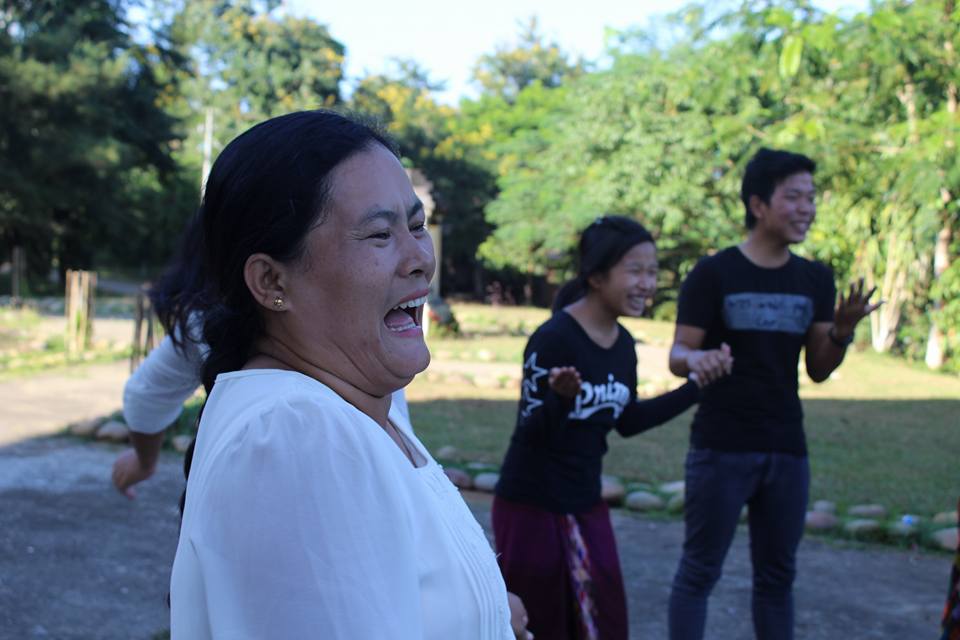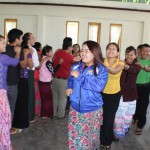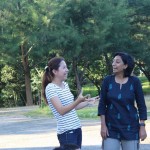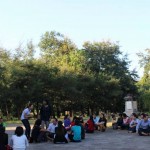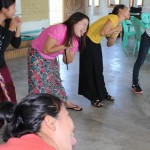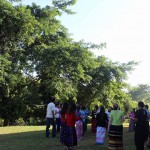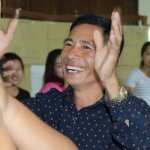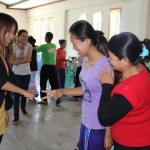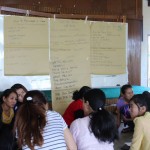Reflecting on the two-day session, one teacher participant said she always thought that peace was for adults but realized that children who learned about peace could grow up to be peaceful adults.
After a successful training session in Naung Taung Monastic Education Institution, Play for Peace trainers Swati Bhatt and Agyat Mitra undertook another round of training in Myitkhina, capital of the state of Kachin. The northernmost state of Myanmar and bordered by China in the North and East, the state of Kachin produces some the world’s best jade. It is this very lucrative industry that unfortunately drives some of the instability of the region. According to rights group Global Witness, jade is driving conflict between the government and ethnic Kachin rebels that has killed thousands of people and displaced 100,000 since 2011. The illicit timber industry is also a concern for the state of Kachin.
According to London-based Environmental Investigation Agency, millions of dollars of high-value species such as rosewood and teak are being stolen from Myanmar to feed China’s market demand. But Kachin state is also known for its beauty and wilderness and it is a nature lovers’ paradise. With Southeast Asia’s highest mountain (Hkakabo Razi tops at 5,881m) in the region, people come to the area to hike, white water raft and ski. Learn more about the region. People of Kachin The people of the region belong to the Kachin ethnic group. Interestingly the Kachin language (also known as Jingpho) has many dialects and either did not have a script or it was lost. It was American missionaries-Baptists in the late 19th century that developed the script using Latin-based alphabet. While the Kachin people go about daily life with eagerness and fervor, they are burdened by fifty years of conflict. Kidnapping of teenage girls and other human trafficking are common occurrences and a concern for parents. It is for these reasons that Play for Peace (PFP) is in the region.
Day 1 of PFP Training – Surprise, Surprise! Expecting only 30 people to join them in their PFP session, Agyat and Swati were greeted by 45 eager participants. Representing 16 community schools and 18 organizations, the group first started with fifty minutes of play, after which everyone shared their feelings and thoughts on the experience.
Some enjoyed the experience of getting in touch with their childhood while others cherished the opportunity to meet new people. Some commented how they felt safe to make mistakes without repercussions while others appreciated the cooperative atmosphere that encouraged participation rather than competition. Next, the group played a game called 'As you like it' which allowed Swati and Agyat to get a better understanding of the group’s feelings on the use of corporal punishment in the education system.
According to local reports, violence among youths as young as 6 years old is common partly due to the use of the “stick” by teachers in the classroom. The facilitators were encouraged to see that most of the participants took the view that 'not beating a child for mistakes' as well as experiential education was a better way to learn.
Day 2 provided an opportunity to review the games played on Day 1 as well as new games like the cap making games. The group also decided to create a local Play for Peace club for more regular meetings. Reflecting on the two-day session, one teacher participant said she always thought that peace was for adults but realized that children who learned about peace could grow up to be peaceful adults.


